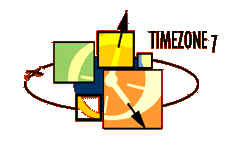
[click to zoom]
[click to zoom]

[click to zoom]

[click to zoom]

[click to zoom]

[click to zoom]

[click to zoom]

[click to zoom]

[click to zoom]

[click to zoom]

[click to zoom]

[click to zoom]
|
 |
Hue March 8th - 9th
Hue, near the DMZ
(De-Militarized Zone) and 17th parallel, was one of South Vietnam’s hardest hit
cities during the American War. It was the Capital City until the French invaded and took
over. That said, Hue is also a fun, exciting, modern town that, like most of Vietnam,
seems to have an elasticity that allowed it to stretch and rebound from the destruction of
war. Sadly, like many of the other places in this country, we saw palaces and historic
sites that have been leveled and lost forever by war, with nothing but a plaque to suggest
and describe what once stood there.
Deciding it was time to delve further into the history of
America's Vietnam War, we made a 14 hour tour of the DMZ (De- Militarized Zone), the
ineptly named area between North and South Vietnam set up in the Geneva Accords. It was
around the DMZ, that the most brutal fighting had occurred. On sights like Kae Sahn and
the Rock Pile thousands had died. We were told that the one foot high grass and random
thin trees, were the result of 30 years of growth from the napalm destruction of a once
dense, living, jungle. Some scientists predict it will take approximately 70 more years to
rid the soil of toxins left over from the war. We were also instructed to stay on the main
path, because it is still common for an unlucky grazing bovine to set off an unexploded
land mine, and that three weeks earlier, a truck had been blown up on a remote (but close
by) path.
We also got to see, from afar, the Ho Chi Minh trail, a
path used by North Vietnamese to supply weapons and goods to the Viet Cong in the South.
Because a bridge had collapsed we were unable to get a close view. We were asked not to
take photos because, apparently, in the middle of the night 10 days prior to our arrival
the bridge collapsed with no explanation - and by police order "no photos" were
allowed. Jeff, being Timezone7's sly reporter on the scene, sneakily snapped a few shots.
One of the days more incredible sights were the Vin Moc
tunnels. These tunnels, unlike Cuchi, were used mostly for living, not fighting. Around
200 people lived there, and at its peak nearly 600. Seventeen babies were born during the
2 years that the people survived numerous bombings while living underground. In the end,
sadly, 150 people were buried alive in the final bombings of the Vin Moc tunnels.
It was a long hard day, but it showed us some of the
hardships faced by the humans involved in this terrible war. We saw that the atrocities
committed were not one sided, and that everyone involved suffered. The ultimate irony is
that the communism the USA was fighting so hard to keep away, has become a capitalistic
system of hotels and tourist sights rivaling anything we had seen. Even though America and
Democracy "lost" the war, the Vietnamese are beginning to rapidly adapt to and
practice capitalism. It sad that so many people had to die to come to where we are today.
Maybe humanity could borrow the saying from the Jewish Culture - "Never Again!" |
